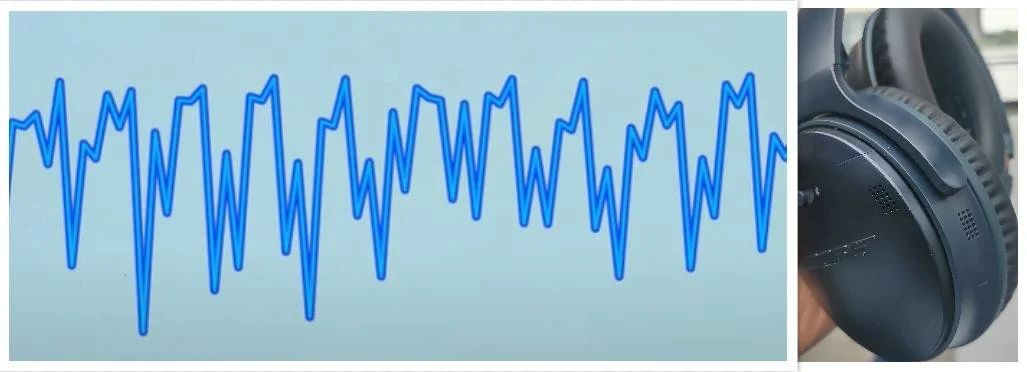How do Noise Cancelling Headphones work!?
Hey friends, Happy Wednesday!
I’m including an extended summary of how a gadget works in my newsletter, from which you can understand the essence in less than 3 minutes. But you can choose to read the blog posts for a more detailed version involving the nuances, from the links I attach.
Let’s look at how Noise Cancelling Headphones work this week. I aim to write my newsletter issues in a way one can follow them while traveling on a bus, having a coffee, waiting for your food, etc. Let's jump in!
Shoutout!
Thank you Siddharth Chamarthy for the suggestion. We spoke about this last October, and finally, I’m writing a newsletter on the same. So, thanks to you.
Tweet of the week
I’m sharing a cool fact about gadgets every day on Twitter. And here is one of them for you.
How do Noise Cancelling Headphones work?
I use Bose QC 35 noise-canceling headphones and I genuinely like it (not a promotion haha!). It uses Active Noise Cancellation. I came across a patent file for the same, and here is how it works.
Headphones of course have speakers to play audio on your ears. Your ears naturally pick up the sound from the speakers which has the intended music, but also the external noise.
And, sounds are basically waves with different frequencies fused together. Don’t worry if I just confused you, but the noise looks like shown in Figure 1 (Left). The amplitude is plotted here. So how do we cancel this external noise?
Figure 1: Amplitude of the external noise (Left); Microphone in headphones (Right)
Here is the twist, headphones also have one or more microphones (Figure 1, Right) in them even if you’re not using them to speak. Go take your headphones and look at it right now! Microphones basically look like a matrix of holes on the exterior. These pick up all the sound/noise from the external environment.
By analyzing the waveform of the sound using a processor, the speakers produce a sound that is sent 180 degrees out of phase with the sensed noise signal. This is played on top of the music/audio that was originally going to be played. Thus, when the noise signal and the new signal that is exactly inverted are added, they cancel out each other (aka destructive interference). Hence, the original music alone can be heard without any noise.
Figure 2: Noise sound wave (top) and the cancellation wave produced by the speaker (bottom). Source: TechInsider
The sound wave on the top is the external noise. The one at the bottom is what is produced by the speaker to cancel out the noise after analyzing it! So now we have the original audio playing from your device in your ears without any noise. And this is how noise-canceling headphones work!
Caveats:
There are some caveats though. The consistent noises and low-frequency sounds are better filtered by the headphones. This is the reason car-honking sounds do not get filtered in most of the headphones. Also, the speaker and microphone need to be positioned close by. Because the noise that reaches our ears will not be exactly the same as that reaches the microphone. However the noise waveform that reaches the microphone is taken as a reference to produce an inverted sound waveform.
Reference: Patent file number US 9445184
Blog Posts
My blog post S2E8 exploring how Wireless charging works is out! I had earlier written a newsletter explaining it in short, and this blog post has relatively more elaborate details in it. Read it here, Happy learning!
Read S2E8: How Wireless Charging Works! in 3 mins
Gadget of the week
Smart shower: Moen has been producing smart home products which include their latest smart shower. Unlike a traditional shower, this one connects to WiFi. It has temperature control and can be adjusted through voice assistants like Google/Alexa. It comes with an app where you can adjust these settings.
Thank you for reading!
Have a nice rest of the week, and take care!
Until next Wednesday,
Chendur


